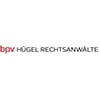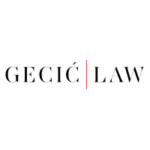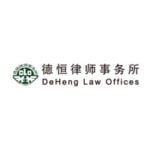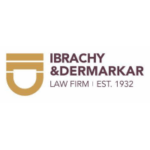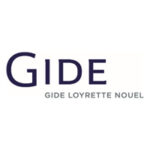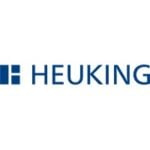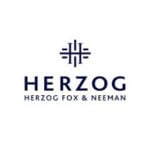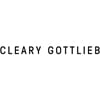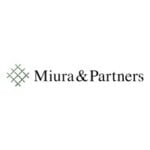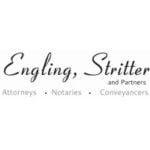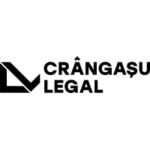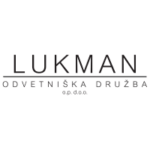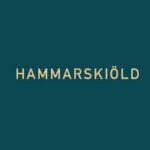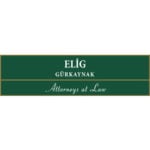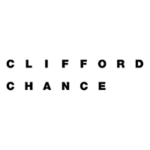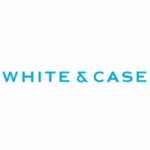-
Overview
Merger Control is regulated by the Competition Act of Montenegro (Zakon o zaštiti konkurencije), “Official Gazette of Montenegro” nos 44/2012, 13/2018 and 145/2021 (“Competition Act”), in force since 2012. In the absence of specific regulation regarding procedural issues, the Competition Act is supplemented by the Administrative Procedure Act (Zakon o upravnom postupku) “Official Gazette of Montenegro” nos 46/2014, 20/2015, 40/2016, and 37/2017, and the Administrative Dispute Act (Zakon o upravnom sporu) “Official Gazette of Montenegro” no 54/2016.
The Competition Act establishes the Agency for the Protection of Competition of Montenegro (“Agency”), which serves as the watchdog for all competition and state aid related issues.
Apart from the Competition Act, merger control is regulated by several bylaws, such as:
- the Rulebook on Method and Criteria for Defining Relevant Markets (Pravilnik o načinu i kriterijumima za utvrđivanje relevantnog tržišta) “Official Gazette of Montenegro” no. 48/2020,
- Guidelines on the Content and Method of Submitting a Request for Issuance of Approval for Implementation of a Merger (Uputstvo o sadržaju i načinu podnošenja zahtjeva za izdavanje odobrenja za sprovođenje koncentracije) “Official Gazette of Montenegro” no. 44/2012,
- Notice on the Protection of Confidential Business Information in Proceedings Before the Agency, no. 1-233/1, dated September 30, 2014 (Obavještenje o zaštiti povjerljivih poslovnih podataka u postupku pred Agencijom za zaštitu konkurencije), and
- Fee Schedule on the Amount of Fees Payable in Proceedings Before the Agency “Official Gazette of Montenegro” no. 44/2012 (Tarifnik o visini naknada koje se plaćaju u postupku pred Agencijom za zaštitu konkurencije), as well as Agency’s opinions where applicable.
Fines for the breaches of competition law are imposed by the Misdemeanor Court (Sud za prekršaje) through misdemeanor proceedings governed by the Misdemeanor Act (Zakon o prekršajima) “Official Gazette of Montenegro” nos 1/2011, 6/2011, 39/2011, 32/2014, 43/2017 and 51/2017. Accordingly, the Agency is vested solely with the authority to determine a competition law infringement or approve a concentration, while the power to impose fines rests exclusively with the Misdemeanor Court.
-
Is notification compulsory or voluntary?
The merger notification regime is mandatory if the thresholds are met. Furthermore, the Agency may, upon becoming aware of an implemented merger, require the parties to the merger to submit a request for approval of the merger if their combined market share in the relevant market of Montenegro exceeds 60%.
-
Is there a prohibition on completion or closing prior to clearance by the relevant authority? Are there possibilities for derogation or carve out?
Yes. Closing the transaction prior to obtaining a clearance decision is prohibited under the Competition Act. Consequently, the parties are required to suspend the implementation of the transaction until the clearance decision has been secured. The relevant legislation does not contain specific provisions addressing carve-out arrangements. To the best of our knowledge, such arrangements have not yet been reviewed by the Agency. It is likely that the Agency will initially adopt a cautious approach towards carve-out mechanisms.
-
What types of transaction are notifiable or reviewable and what is the test for control?
A concentration is considered to arise in case of:
(i) Mergers, i.e., the merger of two or more previously independent undertakings or parts thereof;
(ii) Acquisitions, i.e., the acquisition, by one or more natural persons already controlling at least one undertaking, or by one or more undertakings, of indirect or direct control of the whole or a part of another undertaking;
(iii) Full – function joint ventures, i.e., where two or more independent undertakings establish a new undertaking or acquire joint control of the existing undertaking which operates independently on a lasting basis and performs all the functions of an autonomous undertaking.
With respect to the test for control, it is worth noting that having control over another undertaking means that an undertaking has the possibility of exercising influence on the business operations of another undertaking by legal or factual means such as having: (i) more than half the shares or participating interests, (ii) more than half the voting rights, (iii) the power to appoint more than half of management or persons representing the undertaking, and (iv) decisive influence on the management of an undertaking.
-
In which circumstances is an acquisition of a minority interest notifiable or reviewable?
The acquisition of minority interest is notifiable if it establishes de jure or de facto control the acquiring undertaking (please see Question 4).
-
What are the jurisdictional thresholds (turnover, assets, market share and/or local presence)? Are there different thresholds that apply to particular sectors?
Transaction shall be notified to the Agency if either of the following thresholds are met:
- the combined aggregate worldwide turnover of at least two parties to the concentration generated in Montenegro exceeds EUR 5 million in the preceding financial year; or
- the combined aggregate worldwide turnover of the parties to the concentration exceeds EUR 20 million, if at least one party to the concentration achieved EUR 1 million in the territory of Montenegro.
The Agency may, upon becoming aware of the implemented concentration, require the parties involved to submit a request for approval of the concentration if their combined market share in the relevant market of Montenegro exceeds 60%.
However, certain industries such as banking, insurance industry, media and telecommunications, concessions, and energy are also subject to sector specific regulations.
-
How are turnover, assets and/or market shares valued or determined for the purposes of jurisdictional thresholds?
For the purposes of jurisdictional thresholds, turnover is calculated by aggregating all revenue generated from the sale of goods and services during the year preceding the merger filing, including all members of the undertakings’ groups. Intra-group sales are excluded from this calculation. In the case of joint ventures, the combined turnover of both joint venture partners’ entire groups is considered. In joint venture cases, total group turnover of both joint venture partners is calculated.
Turnover for banks, credit institutions, and insurance companies is calculated differently. For banks and other financial institutions, after the deduction of direct taxes applicable to them, the sum of the following revenues is taken into account interest income and similar revenue; income from securities; commission income; net profit from financial transactions; other income from regular business activities. Regarding insurance companies, turnover is calculated as the total value of gross premiums, after deducting taxes and parafiscal contributions levied on individual premium amounts or related to the overall volume of premiums.
-
Is there a particular exchange rate required to be used for to convert turnover thresholds and asset values?
Particular exchange rates are not prescribed.
-
In which circumstances are joint ventures notifiable or reviewable (both new joint ventures and acquisitions of joint control over an existing business)?
Joint ventures are subject to merger control, but only under specific conditions:
- When two or more independent undertakings create a new entity; or
- When they acquire joint control over an existing undertaking that operates on a long-term basis and performs all functions of an independent business — full-function joint venture.
A joint venture is deemed “full-function” if it operates on a long-term basis and performs all the functions of an independent economic entity. If a joint venture does not meet these criteria and does not act as a fully autonomous entity, it is not subject to merger control. However, such ventures may still be examined under general competition laws if they facilitate market coordination and restrictive agreements between the parent companies.
Whether a joint venture is “full-function” or merely “cooperative” hinges on the venture’s level of dependence on its parent companies and its degree of market independence. In the absence of specific local guidelines for what constitutes a “full-function” joint venture, EU regulations and definitions are applied by analogy.
-
Are there any circumstances in which different stages of the same, overall transaction are separately notifiable or reviewable?
Two or more transactions between same undertakings are considered a single merger if they are carried out within a period of less than two years.
-
How do the thresholds apply to “foreign-to-foreign” mergers and transactions involving a target / joint venture with no nexus to the jurisdiction?
Although the Competition Act stipulates that it applies to concentrations that have or may have effects on competition in Montenegro, it has not yet implemented a domestic effects doctrine. This means that, according to current decisional practice, a transaction must meet the turnover thresholds to trigger a filing obligation, but it does not need to demonstrate an impact on competition within Montenegro. As a result, foreign-to-foreign transactions that meet the required turnover thresholds are subject to filing requirements in Montenegro, and the Agency typically reviews and clears these transactions within Phase I of the process.
-
For voluntary filing regimes (only), are there any factors not related to competition that might influence the decision as to whether or not notify?
N/a
-
What is the substantive test applied by the relevant authority to assess whether or not to clear the merger, or to clear it subject to remedies? Are there different tests that apply to particular sectors?
The Agency decides on the approval of a concentration by assessing its effects on the prevention, restriction, or distortion of effective competition in Montenegro, particularly with regard to the creation or strengthening of a dominant position.
The criteria which is assessed is as follows:
- structure and concentration of the relevant market;
- actual and potential competitors;
- market position of the parties to the concentration and their economic and financial strength;
- choice available to suppliers and customers;
- legal and other barriers to entry into the relevant market;
- degree of internal and international competitiveness of the parties to the concentration;
- supply and demand trends for the relevant goods or services;
- trends in technical and economic development;
- consumer interests.
All of the abovementioned will be taken into account by the Agency in assessing the potential effects of concentration to the market in Montenegro.
-
Are factors unrelated to competition relevant?
Generally, the Agency is only concerned with competition issues, however depending on the specifics of each case, other factors might be considered as well. To the best of our knowledge, so far the Agency has never used factors unrelated to competition issues as a ground for decision making.
-
Are ancillary restraints covered by the authority’s clearance decision?
Ancillary restraints are not explicitly regulated in Montenegro. In the absence of explicit regulation, the Agency can clear ancillary restraints in its decisions, if it decides to. Namely, Montenegro has entered into a Stabilization and Association Agreement with the EU, which, inter alia, imposes upon Montenegro the obligation to adopt and implement best practices in the area of competition law, in alignment with the standards set by the EU.
Therefore, this means that the European Commission’s Ancillary Restraints Notice could potentially be used as guidance. However, according to the Agency’s decisional practice, a parallel examination of antitrust (restrictive agreements) and mergers aspects is not present in merger control proceedings.
-
For mandatory filing regimes, is there a statutory deadline for notification of the transaction?
Merger notifications are required to be filed within 15 days of the conclusion of the agreement, publishing or closing a public bid, or acquiring control over the target company. Failure to comply with the aforementioned deadline can result in monetary fines.
-
What is the earliest time or stage in the transaction at which a notification can be made?
The parties can notify the Agency of the transaction, as soon as they demonstrate serious intent to enter into an agreement, for example by signing a letter of intent or a memorandum of understanding, announcing their intent to make a bid, or in any other way which precedes any of the following events: conclusion of the agreement, publishing or closing a public bid, or acquiring control over the target company.
-
Is it usual practice to engage in pre-notification discussions with the authority? If so, how long do these typically take?
Pre-notification discussions are not explicitly stipulated by the relevant legislation. However, parties may engage in such discussions with the Agency. Parties can schedule appointments with the Agency at any time, particularly in complex or sensitive mergers that may have significant market effects. Depending on the case, these discussions are typically brief and do not significantly extend the overall proceedings. In more complicated cases, however, the discussions may take longer.
-
What is the basic timetable for the authority’s review?
According the Competition Act, the Agency will render the following decisions:
- reject the notification if the thresholds are not met – within 25 days from the day on which the filing was submitted on;
- clear the concentration unconditionally (phase I) – within 105 working days from the day on which the complete filing was submitted on;
- clear the concentration conditionally – within 125 working days, from the day on which the complete filing was submitted on.
- prohibit the concentration it it significantly impedes effective competition – within 130 working days, from the day on which the complete filing was submitted on.
It is evident that deadlines are quite longer than those in other Western Balkans jurisdictions.
-
Under what circumstances may the basic timetable be extended, reset or frozen?
While the timetable cannot be extended, reset or frozen, the deadlines are calculated from the day on which the complete filing was submitted on. This means that if the Agency deems the filing incomplete, and requests additional information, this period will not be calculated for the purpose of deadlines. This allows the Agency to extend and prolong the timetable for as long as they need clarifications.
-
Are there any circumstances in which the review timetable can be shortened?
There are no explicitly prescribed circumstances in which the timetable can be shortened. However, there are three situations in which the Agency may act quicker than usual, due to the fact that these situations do not require detailed scrutiny as they usually lack anticompetitive effects.
This will be the case in the following three scenarios:
- If the participants to the concentration are not active in the same relevant product market, nor in vertically integrated or closely connected markets, whether within Montenegro or outside its territory;
- If two or more participants in the concentration are present in the same relevant market, but their combined market share is less than 10%, or where the participants operate in vertically integrated markets and each participant’s market share in their respective markets does not exceed 15%;
- If a market participant acquires sole control over another market participant with whom it previously held joint control, and the acquisition had already been subject to an individual concentration approval request.
-
Which party is responsible for submitting the filing?
If an undertaking acquires control over all or part of one or more other undertakings, the notification must be submitted by the acquiring undertaking. For joint ventures, the notification must be submitted by all parties involved in the joint venture.
-
What information is required in the filing form?
In order to be considered complete, a notification must also meet the requirements regarding delivering information, set out in the Competition Act, and the Instructions on the content and procedure for submitting a request for the issuance of approval for the implementation of concentration (Uputstvo o sadržaju i načinu podnošenja zahtjeva za izdavanje odobrenja za sprovođenje koncentracije) (“Official Gazette of Montenegro”, no, 44/12) (“Instructions”).
In general, the notifying parties must provide information about participants to the concentration, market, and effects on the market. The information required is as follows:
- Detailed description of the type of concentration, particularly including listing all participants in the concentration present in the Montenegrin market or markets outside Montenegro, method of conducting the concentration, financial and other conditions and reasons for conducting the concentration as well as ownership structure before and after the proposed concentration;
- Information on the financial value and scope of production and sales achieved by the participants in the concentration through the sale of goods or services in the relevant market in Montenegro for the last three years, including the year in which the concentration is being conducted;
- Detailed analysis of the economic benefits that will arise for consumers, with an impact on, price reduction, increasing competition, increasing consumer choice, increasing services quality, research and development investments;
- Analysis of business reasons for conducting the concentration and expected effects for the participants in the concentration and the relevant market;
- Detailed description of the sales or distribution network of goods and services of the participants in the concentration in the relevant market, production process, price determination, and sales conditions;
- Information on the number of employees of the participants in the concentration for the last three years, including the year in which the concentration is being conducted;
- Information on the five largest customers of each participant in the concentration for the last three years, including the year in which the concentration is being conducted;
- Information on the five largest suppliers of the participants in the concentration for the last three years, including the year in which the concentration is being conducted, with indicated procurement volume and value on an annual basis;
- Assessment of the relevant geographic market and product market and the market share of the participants in the concentration on the relevant market for the last three years before submitting the request, including the year in which the concentration is being conducted;
- Assessment of the relevant market where affiliated entities with the participants in the concentration have been present for the last three years, including the year in which the concentration is being conducted;
- Analyses, studies, and other business reports and assessments regarding the financial and business objectives of the concentration, competition conditions in the relevant market, economic potentials of the market, participation and activities of existing and potential competition;
- Graphical representation of the organizational structure of the participants in the concentration, including the representation of parent or subsidiary and related business entities of the participants in the concentration who are active entities or registered in other countries;
- List of all market participants (authorized persons, directors, or members of the board of directors) participating in the concentration and registered as authorized persons, representatives, directors, or members of the board of directors of other market participants;
- Intent regarding research and investment in business development, new products, and their placement in the market of Montenegro;
- The request is submitted in written and electronic form, in one copy, in Montenegrin. Documents submitted with the request or containing any of the any of the aforementioned information in a foreign language are submitted as a copy of the original document translated into Montenegrin.
-
Which supporting documents, if any, must be filed with the authority?
In order to be considered complete, a notification must also meet the requirements regarding documentation set out in the Competition Act, and the Instructions.
The documentation is as follows:
- Basic information about the participants in the concentration and applicants, including excerpts from the Central Registry of Business Entities for the participants in the concentration;
- Notarized copy of the act governing the merger (such as an SPA);
- Financial statements for market participants who are participants in the concentration for the three years preceding the year in which the concentration is being conducted, expressed in Euros, as well as the turnover and sales volume achieved up to the date of submitting the concentration approval request for the current year;
- Financial statements of the participants in the concentration for the year preceding the year in which the concentration is being conducted;
- Decisions of competition authorities of other countries to which a request for approval for the implementation of concentration has been submitted, or evidence of the submitted request or intention to submit a request as well as the basis for submitting the request;
- The request is submitted in written and electronic form, in one copy, in Montenegrin. Documents submitted with the request or containing any of the any of the aforementioned information in a foreign language are submitted as a copy of the original document translated into Montenegrin.
-
Is there a filing fee?
Yes. The fees are as follows:
- EUR 600.00 for the issuing the decision on the rejection of the concentration;
- EUR 1,000.00 for the issuing the decision on the rejection of the concentration if the concentration would significantly impede effective market competition in the relevant market and particularly by creating a new dominant position or strengthening an existing dominant position;
- 03% of the total turnover of both undertakings (max. EUR 15,000.00) for the issuing of the approval of the concentration in a summary proceeding (phase I);
- 07% of the total turnover of both undertakings (max. EUR 20,000.00) for the issuing of the approval of the concentration, in an investigation proceeding (phase II).
-
Is there a public announcement that a notification has been filed?
Pursuant to the Competition Act, the Agency is obliged to publish the information from the merger notification filing, especially (i) the names of the undertakings, (ii) the nature of the concentration, and (iii) economic sector within which the concentration is implemented.
-
Does the authority seek or invite the views of third parties?
Yes. The Agency is authorized to request a wide range of information from third parties. This is most likely to occur during phase II proceedings, when market participants are required to provide their views on whether the prospective concentration could restrict competition in the relevant market, among other considerations.
-
What information may be published by the authority or made available to third parties?
Pursuant to the Competition Act, the Agency is obliged to publish the information from the merger notification filing, especially the names of the undertakings, the nature of the concentration, and economic sector within which the concentration is implemented.
Agency is also obliged to publishes decisions on the rejection of merger if it determined that such a concentration would significantly restrict effective market competition in the relevant market, particularly through the creation of a new or the strengthening of an existing dominant position.
The parties can request to protect certain information, and information sources such as group structure, business strategies, buyers and sellers, and financial information. The Agency will approve of such a request of the request is justified and if the applicants interest are more significant than the need to notify the public regarding the specifics of the merger.
-
Does the authority cooperate with antitrust authorities in other jurisdictions?
The Agency has been a member of the International Competition Network (ICN) since 2007. Collaboration within ICN continued throughout 2023. The ICN is an international organization solely dedicated to the enforcement of competition laws, comprising national and multinational competition authorities.
- Closing Chapter 8 – Competition is crucial for Montenegro as it aligns its economic framework with EU standards, ensuring a fair and competitive market. This chapter addresses issues such as state aid and antitrust regulations, which are essential for promoting transparency and preventing monopolistic practices. By successfully closing this chapter, Montenegro will attract more foreign investments, as businesses will have greater confidence in a level playing field. It also reinforces the country’s commitment to EU accession, demonstrating its readiness to adhere to strict market rules. Additionally, it ensures better protection for consumers and fosters innovation within the Montenegrin economy. In terms of strengthening administrative capacities and fulfilling obligations from the EU agenda within Chapter 8 – Competition, the Agency is constantly working on improving the cooperation that EU partners can provide. The key partners are:
- Austria through continued cooperation with the Federal Competition Authority (BWB) to strengthen administrative capacities and support under a 2013 Memorandum;
- Bulgaria through Memorandum of Understanding to further promote competition in the field of competition law and policy;
- Croatia through continued cooperation with Croatian Competition Agency in area of enhancing knowledge of Agency officials and consultation about important cases similar to both jurisdiction;
- Italy by discussing challenges in competition with the Italian Ambassador;
- France by initiating bilateral cooperation with French competition authorities and exploring European integration aspects;
- Hungary by signing a Memorandum of Cooperation to align Montenegrin competition law with EU standards;
- Germany with bilateral cooperation with Bundeskartellamt through state memorandum between ministries for economic development with emphasis on closing chapter 8 and getting EU standards in Agency daily work.
Regional cooperation is vital for Montenegro as it strengthens political stability and fosters peace in the Western Balkans. By collaborating with neighboring countries, Montenegro enhances its economic growth through trade, tourism, and infrastructure development. Regional partnerships also facilitate joint efforts in tackling shared challenges like environmental protection, migration, and organized crime. Furthermore, cooperation is crucial for Montenegro’s progress towards EU integration, as regional stability and good relations are key criteria. Lastly, cultural and educational exchanges promote mutual understanding, further solidifying Montenegro’s ties within the region. Regional Centre for Competition is also important framework for Montenegro participation in regional initiatives. The OECD-GVH Regional Centre for Competition in Budapest (Hungary) (“RCC”) was established by the Gazdasági Versenyhivatal(GVH, Hungarian Competition Authority) and the Organisation for Economic Co-operation and Development (OECD) on 16 February 2005 when a Memorandum of Understanding was signed by the parties.
Relevant partners are:
- Albania where signing of Memorandum of Understanding is planned until end of 2024 and will help to enhance cooperation between two jurisdictions;
- Azerbaijan where signing of Memorandum of Understanding is planned until end of 2024;
- Bosnia and Herzegovina through Memorandum of Understanding which helped better communication between agencies;
- North Macedonia through Memorandum of Understanding and cooperation in field of competition;
- Serbia through Memorandum of Understanding which helped enhancing bilateral cooperation between institution;
- Turkey where signing Memorandum of Understanding is planned for October 2024.
-
What kind of remedies are acceptable to the authority?
The Agency permits both behavioral and structural remedies, and if the Agency finds these measures adequate to ensure that the concentration will not impede competition, it will approve the concentration subject to these conditions. The approval will detail the terms and conditions for clearance and the methods for monitoring or supervising their implementation. The parties can suggest remedies themselves with goal to remove any anticompetitive concerns.
Failure to implement the remedies, will result in the revocation of the approval, and a fine ranging from 1% to 10% of the total annual turnover in the year prior to the violation.
-
What procedure applies in the event that remedies are required in order to secure clearance?
In Montenegro, a specific procedure is not prescribed. However, if the Agency determines that a proposed transaction may significantly restrict, distort, or prevent competition, the notifying party may enter into negotiations to propose remedies. In such cases, the Agency will issue a statement of objections, outlining the facts and evidence it intends to rely on for its decision, and will request the notifying party’s comments. In response, the notifying party can propose conditions and obligations to address the identified anti-competitive concerns. If the Agency deems the proposed remedies sufficient, it will approve the transaction.
Should the Agency raise serious concerns about a merger, it is crucial for the parties to begin negotiating potential commitments well in advance of any deadlines. The authority typically considers approving a merger with conditions only if the parties proactively offer commitments to address the competition issues.
-
What are the penalties for failure to notify, late notification and breaches of a prohibition on closing?
Failing to notify the Agency within 15 days of the conclusion of the agreement, publishing or closing a public bid, or acquiring control over the target company, will result in a fine ranging from EUR 4,000.00 to EUR 40,000.00, while the responsible persons within the company will be subject to fines ranging from EUR 1,000.00 to EUR 4,000.00.
If the undertaking executes a concentration without the prior approval of the Agency, the it will be fined in the amount equal to 1% to 10% of its total annual turnover in the prior financial year, while the responsible persons within the company will be subject to fines ranging from EUR 1,000.00 to EUR 4,000.00. The Agency may also prescribe various behavior and structural measures such as divestments.
-
What are the penalties for incomplete or misleading information in the notification or in response to the authority’s questions?
Upon reviewing the submitted information, if it further requires clarifications, the Agency will request additional documentation or ask the parties to provide explanations for the information. The Agency has the discretion to set a deadline for these submissions as it deems necessary, depending on the documentation.
If the parties do not deliver the requested documents and information, the Agency may impose a periodic penalty ranging from EUR 500.00 to EUR 5,000.00 per day of non-compliance, up to a maximum of 3% of the total revenue generated in the financial year preceding the year in which the procedure was initiated.
The Agency shall revoke a decision approving a concentration if it was based on incorrect or false information and facts.
-
Can the authority’s decision be appealed to a court?
Agency’s decision can be appealed before Administrative Court, within the deadline of 20 days from the date of receipt of the decision.
-
What are the recent trends in the approach of the relevant authority to enforcement, procedure and substantive assessment?
In 2023, the Agency decided on 75 merger filings, a rise from 68 merger filings in 2022. Of these, five involved joint ventures, 67 were related to sole acquisitions of control, one procedure was discontinued, and two requests were rejected. Among the approved concentrations, five were domestic and 70 were foreign. The majority of these concentrations were in the telecommunications and media sector, followed by the automotive industry, banking services, and insurance services. Out of the 75 cases, 18 were carried over from 2022, while 57 were new requests submitted in 2023.
-
Are there any future developments or planned reforms of the merger control regime in your jurisdiction?
To the best of our knowledge, there are currently no publicly available information on future developments and planned reforms regarding the merger control regime in Montenegro.
Montenegro: Merger Control
This country-specific Q&A provides an overview of Merger Control laws and regulations applicable in Montenegro.
-
Overview
-
Is notification compulsory or voluntary?
-
Is there a prohibition on completion or closing prior to clearance by the relevant authority? Are there possibilities for derogation or carve out?
-
What types of transaction are notifiable or reviewable and what is the test for control?
-
In which circumstances is an acquisition of a minority interest notifiable or reviewable?
-
What are the jurisdictional thresholds (turnover, assets, market share and/or local presence)? Are there different thresholds that apply to particular sectors?
-
How are turnover, assets and/or market shares valued or determined for the purposes of jurisdictional thresholds?
-
Is there a particular exchange rate required to be used for to convert turnover thresholds and asset values?
-
In which circumstances are joint ventures notifiable or reviewable (both new joint ventures and acquisitions of joint control over an existing business)?
-
Are there any circumstances in which different stages of the same, overall transaction are separately notifiable or reviewable?
-
How do the thresholds apply to “foreign-to-foreign” mergers and transactions involving a target / joint venture with no nexus to the jurisdiction?
-
For voluntary filing regimes (only), are there any factors not related to competition that might influence the decision as to whether or not notify?
-
What is the substantive test applied by the relevant authority to assess whether or not to clear the merger, or to clear it subject to remedies? Are there different tests that apply to particular sectors?
-
Are factors unrelated to competition relevant?
-
Are ancillary restraints covered by the authority’s clearance decision?
-
For mandatory filing regimes, is there a statutory deadline for notification of the transaction?
-
What is the earliest time or stage in the transaction at which a notification can be made?
-
Is it usual practice to engage in pre-notification discussions with the authority? If so, how long do these typically take?
-
What is the basic timetable for the authority’s review?
-
Under what circumstances may the basic timetable be extended, reset or frozen?
-
Are there any circumstances in which the review timetable can be shortened?
-
Which party is responsible for submitting the filing?
-
What information is required in the filing form?
-
Which supporting documents, if any, must be filed with the authority?
-
Is there a filing fee?
-
Is there a public announcement that a notification has been filed?
-
Does the authority seek or invite the views of third parties?
-
What information may be published by the authority or made available to third parties?
-
Does the authority cooperate with antitrust authorities in other jurisdictions?
-
What kind of remedies are acceptable to the authority?
-
What procedure applies in the event that remedies are required in order to secure clearance?
-
What are the penalties for failure to notify, late notification and breaches of a prohibition on closing?
-
What are the penalties for incomplete or misleading information in the notification or in response to the authority’s questions?
-
Can the authority’s decision be appealed to a court?
-
What are the recent trends in the approach of the relevant authority to enforcement, procedure and substantive assessment?
-
Are there any future developments or planned reforms of the merger control regime in your jurisdiction?
